Feeding Cats People Cleaning Their Room
Cleaning a House With Cats
Suppose you're moving into a house that previously had cats or dogs. In that case, you might want to consider taking a few extra steps when cleaning to ensure your new home is properly cleaned.
I have a small dog myself, and lucky for me, he is hypoallergenic, so I've never really had to worry about dog hair and pet mess when moving houses. However, I have certainly moved into a house with cats, and cat smells can be quite difficult to remove.
What is Wrong With Cats?
While cats are often seen as low-maintenance pets, there are a few potential problems that owners should be aware of. One issue is cat dander—tiny flakes of skin that can trigger allergies in some people.
Although dander is not technically alive, it can still cause respiratory problems and other symptoms in sensitive individuals. Not to mention the fact that no-one wants cat dander in their home! I certainly don't consider a house clean that has cat dander!
Cats often use kitty litter boxes, which can be unsightly and difficult to keep clean. Litter boxes emit a strong odor, which some like offensive. Cats sometimes scratch furniture or urinate outside of the litter box, causing damage and creating messes for their owners to deal with. These problems are important factors to consider.
While the previous home occupant may have done a great job covering up the smells with a cleaning agent, that cleaning agent will eventually wear off, and the cat smell will linger. Ask me how I know!
*This post contains affiliate links. Full disclosure here.
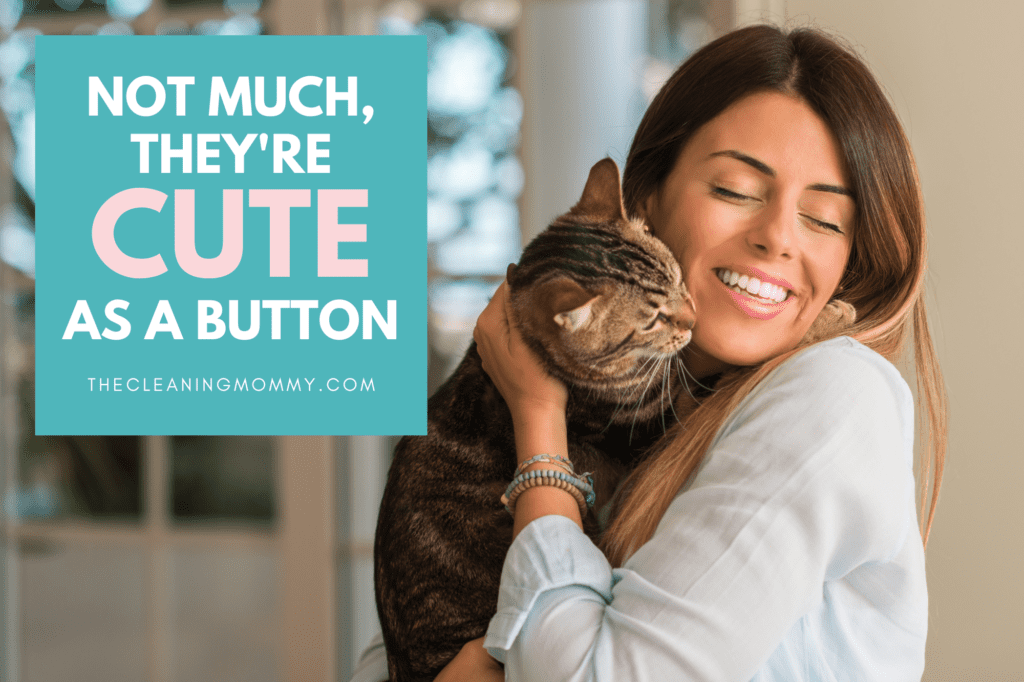
You might be faced with damaged carpets from a feline friend urinating on them or walls stained with cat spray. These home areas will be easy to miss during an initial walkthrough, especially since they can be covered up temporarily. You don't want to live with any pet odors on a permanent basis!.
It is especially important to properly and thoroughly clean a house that had cats if you have any allergies to pets, specifically cat hair. Your allergies may not flare up right away. Still, over time, your allergies will start to surface since you live in a home contaminated with hidden pet fur and other pet messes. You may not realize the cause of them.
Thank goodness there are ways to get your house clean and in tip-top shape. Everyone wants to live in a clean house, right?
Here are your best tips on cleaning a house that had pets.
Ways to Get Rid of Cat Dander In A New House
Before moving into a new house, I would ask the prior owner or the cat owner what other pets have lived in your soon to be new house. Hopefully, they are the kind of people who will disclose the proper information to you, and you can find out if there are possibilities of pet messes to clean in the future.
If there are cats or dogs that lived in the home, I would take extra steps to clean the house properly before moving in your belongings. It will be much more difficult to properly clean the house if you have to move the couch around and shift all your furniture to get into those hard-to-reach spots to get a proper clean
A/C, Heat, Ventilation System
Before you move into a home that previously had pets living inside of it, you should open up all of the windows and let the fresh air inside the house. This is great to do even if it is the dead of winter because the cold will come inside and freeze some of the dust mites that might cause you allergies in the future.
Letting sunshine inside the home can also be helpful because the sun has natural properties and can help disinfect the house. It's still a good idea to do a deeper clean later, but opening the windows and letting in the sunshine and fresh air is an excellent start to getting rid of dust mites, it also helps to rid the house of any kitty litter smell you might be getting.
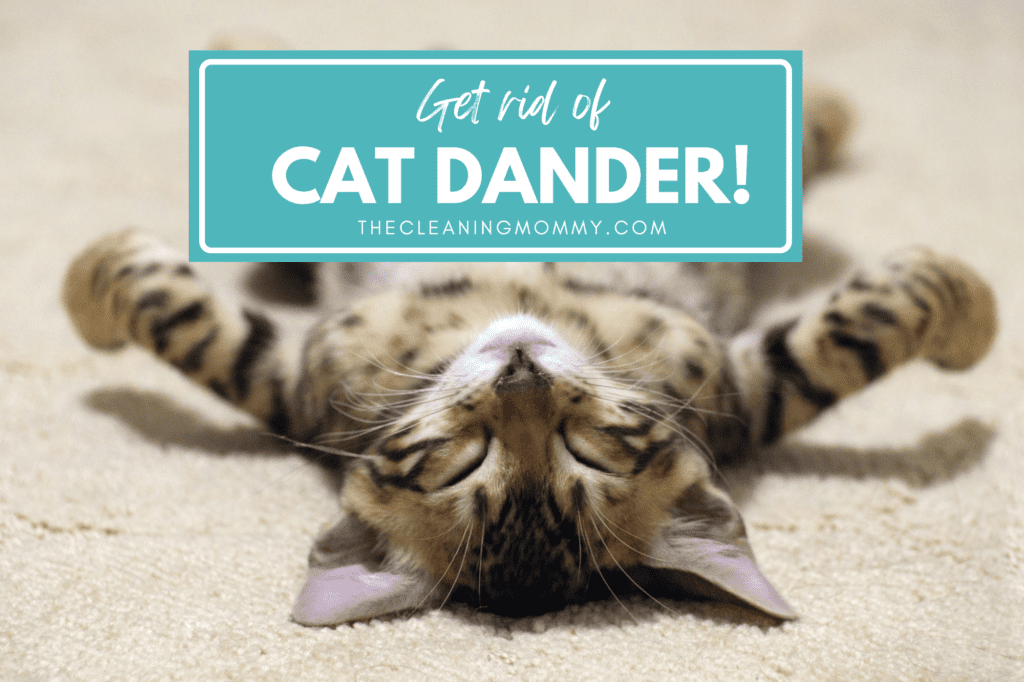
What Are Dust Mites?
Dust mites are small organisms that flourish in warm, humid environments. These unsavory pests are often found in mattresses, pillows, and upholstered furniture and survive on dead skin cells.
Dust mites are not dangerous, but can cause allergic reactions in some people. Symptoms of a dust mite allergy include,
- sneezing,
- runny nose
- itchy eyes
- difficulty breathing.
If you suspect that you may have an allergy to dust mites, there are a few things you can do. First, wash bedding and upholstered furniture in hot water regularly. You can also vacuum periodically, I love using the robot vacuum to pick up any loose hair on the floor.
You should also use a damp cloth to dust surfaces. Finally, consider investing in an air purifier to remove dust mites from the air, this will help with your cat allergies tremendously.. By taking these steps, you can help to reduce your exposure to these tiny creatures and relieve your allergy symptoms.
Clean The Vents
If you have a cat, it's important to keep your HVAC system clean. Over time, cat dander, hair, and odor can build up in the vents, leading to poor air quality and potentially triggering allergies or asthma. The good news is that it's relatively easy to clean the vents yourself. Just make sure to turn off the power to the unit first, then use a vacuum with a hose attachment to remove any debris.
You can also use a mild detergent and warm water to scrub any stubborn buildup. Just be sure to rinse the vents thoroughly afterward. You can help keep your home clean and dander-free by taking a few simple steps.
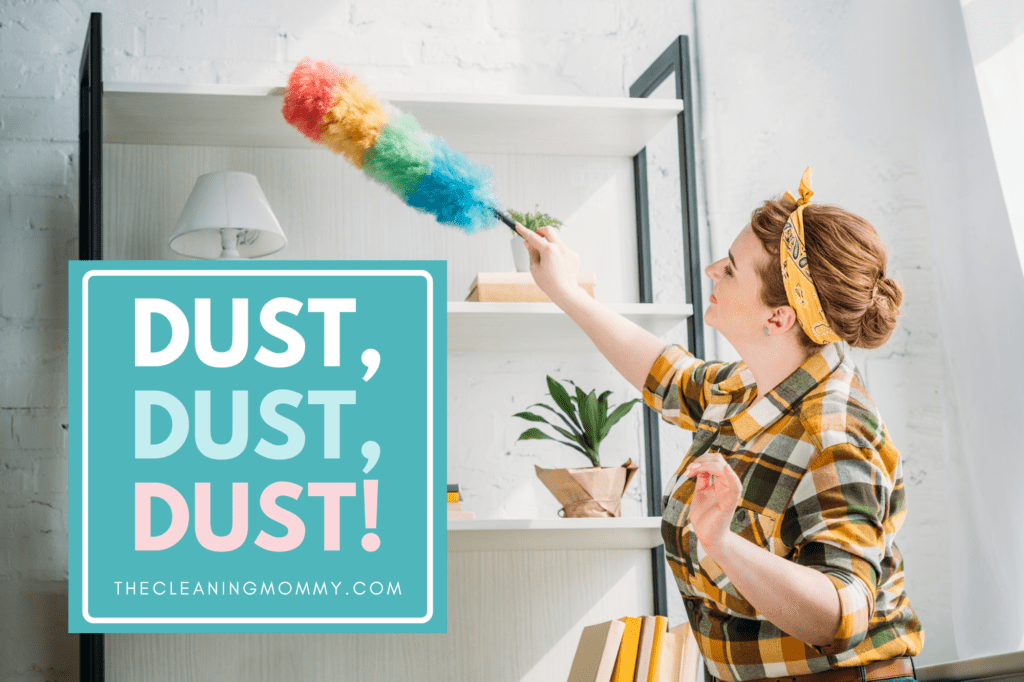
Replace The Filters (before and after cleaning)
Replacing the furnace filters in your new home should already be standard practice. But if it is not, and you are moving into a home that previously had pets, then getting a new filter should be a priority. A clean filter ensures that your home isn't circulating dander and allergens around the house.
It would help if you always replaced the filters when moving into a new house, but it is more important when moving into a home that previously occupied pets.
Vacuuming and sweeping can help to reduce the amount of loose hair in your home. Still, they will never be able to eliminate it completely. One way to help reduce the amount of pet hair in your home is to invest in high-quality air filters for your HVAC system.
These filters can capture a large amount of hair, dander, and other allergens, helping to create a healthier environment for you and your family. In addition, regular maintenance of your HVAC system will ensure that it is operating at peak efficiency, helping to improve the quality of your indoor air further.
Filter The Air
Cats are one of the most common sources of allergies, and their dander and hair can trigger sneezing, congestion, and respiratory difficulties big time. HEPA air purifiers can be a helpful way to reduce the number of allergens in the home.
HEPA stands for High-Efficiency Particulate Air, and these filters are designed to capture tiny particles from the air, and remove contaminants.
While not all machines on the market are genuine HEPA filters, many air purifiers contain similar technology that can still help reduce allergens. When looking for an air filter to minimize pet allergies, check for the HEPA certification.
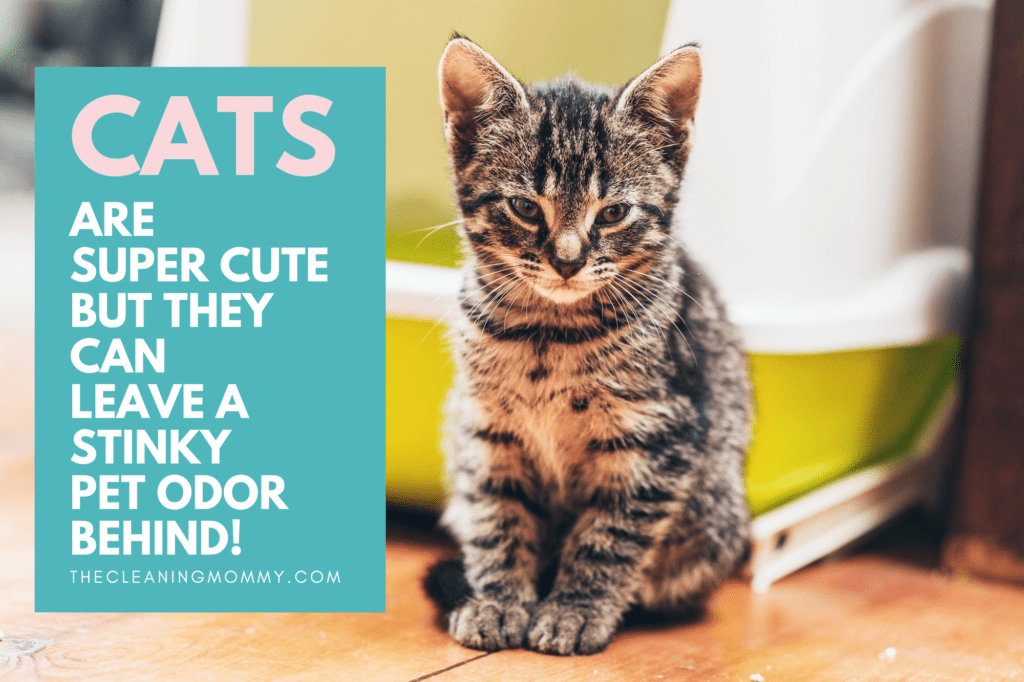
Dust Well
Even if the house looks clean before you move into it, go over it once more and dust it well. It is nearly impossible to have a dust-free home, even if all the furniture has been moved out.
There is always dirt lingering on the fireplace mantel, baseboards, top of the door frame, window frames, and more. Dust is all around you, and pet dander mixed in with regular dirt can be inconvenient if you have allergies.
Certain areas will need to be dusted more frequently after a cat leaves its mark on a home. The first area is the windows. Cats love to sit in sunny spots and watch the world go by, leaving behind a layer of fur on the window sill. So giving the window sills a good dust for the first few weeks, will help keep your house clean.
The second area is any surface where the cat liked to sleep or spend time. This could be a bed, couch, or chair. These surfaces will likely be covered in fur and must be vacuumed or dusted regularly to prevent build-up.
Finally, it would help if you clean areas where the cat ate or often drank, including the surrounding walls and floors. By dusting these key areas regularly, you can help keep your house clean and fur-free after the feline friend has moved out.
I know it sounds like a lot, but if you follow these tips, it really will help you to get your home clean, and keep your house clean once we get the smells out!
Completely Clean The House
When moving into a new home, you might be lucky enough to afford a professional cleaning services company do a deep cleaning on the home for you. Even if you had a cleaning crew come in, you should still consider doing your own deep clean inside the house simply because then you would have peace of mind knowing you cleaned all the house areas.
You'll want to wash the walls, remove any curtains and blinds left behind and give them a proper cleaning. I would also do a deep clean on the dishwasher before you start using it regularly.
Another area of the home that will want to be deep cleaned is all the air vents. Lift up those covers and vacuum the inside of the vents, most people forget to do that, but it does make a difference..
This is important because some pets can poop and urinate inside of these vents, and the cleaning crew won't look in there or clean inside for you. If you're moving into the house in the summer, you may not notice any smells coming from the vents until wintertime.
This is pretty gross, and many pet owners don't know that their pets have done this in the past, so there has been no reason to clean there. When the smell gets pretty potent, is when it's too late, so give this area a good clean.

Get Rid Of Old Carpeting
If your new home has carpets and you have the chance to get rid of the carpets, do so right away. Homes that have had pets living inside will most likely have damaged carpeting, which can be a health hazard for you and your family members. Who doesn't love getting new carpeting in a new home anyway!
When removing old carpeting in a house that previously had cats, odors and smells can be a significant issue. While the carpet may not have been the source of the odors, it can absorb the smell over time. As a result, removing the carpeting as soon as possible is essential to prevent odors from becoming embedded in the fabric.
In addition, it is also important to clean and disinfect all surfaces that come into contact with the old carpet. This will help to prevent the spread of odors and bacteria.
Once a carpet has been removed, it is important to clean the area thoroughly to remove any odors or smells that might be lingering. First, start by vacuuming the area to remove any dust or debris. Then, deep clean the floor using a powerful cleaner and hot water.
Be sure to rinse the area well afterward. If the odors persist, you may need to treat the floor with an enzymatic cleaner to break down the odors at their source. With some elbow grease and the right products, you should be able to get rid of any lingering odors from your carpet removal.
Deep Cleaning Carpets
If you cannot afford to get rid of the carpets in your home, I highly suggest doing a deep clean of the carpets needing a steam cleaner and professional-grade carpet cleaning solution. You can rent steam cleaning machines if you do not have easy access to one at home. Do a thorough vacuuming first to remove dander and hair.
Cat urine and other odors can penetrate deep into carpet fibers, making them difficult to remove with conventional cleaning methods. Deep cleaning involves using powerful cleansing agents and hot water to remove odors from the carpet padding and backing.
Professional carpet cleaners often use this method, and it can be very effective at removing stubborn odors. If you have light-colored carpets, a deep cleaning may help restore their original color.
This is important. If you can't simply get rid of the carpets or replace them, giving them a deep clean is the next best thing. This is my favorite steam cleaner and carpet cleaning solution for cleaning carpets.
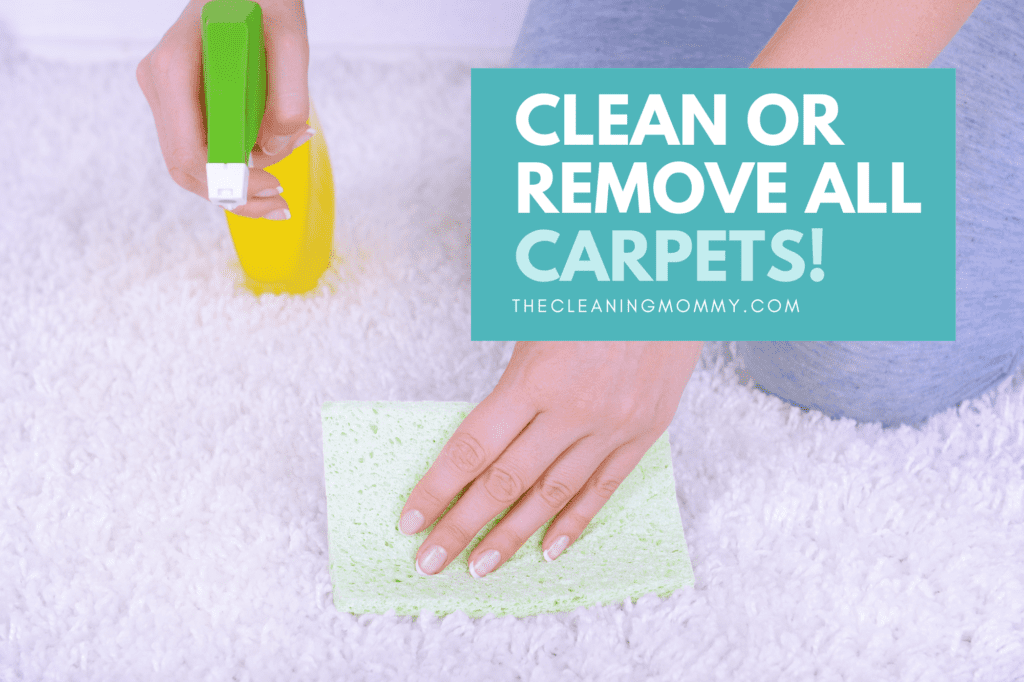
How to Get Rid of Pet Odor in Hardwood Floors
Let's look at the most effective methods for removing pet smell from hardwood flooring. Because hardwood floors are an expensive luxury, it's critical to preserve them in good shape. Use gloves for all these procedures to protect yourself from your pet's urine.
Gloves are an important part of protecting yourself when working with pet urine. They help to keep your hands clean and prevent the spread of bacteria. In addition, gloves provide a barrier between your skin and the urine, which can contain harmful chemicals.
Using Baking Soda
This one is ideal for dealing with messes caused by pets. Any pet owner knows that accidents happen. Whether your cat misses the litter box or hates the litter box, dealing with urine stains and smells can be a challenge. However, baking soda is an easy and inexpensive way to clean up even the worst mess.
Baking soda acts as a natural deodorizer that can neutralize both the smell and the urine stain. Spread baking soda on the affected area and let it sit for several hours. Once the baking soda has had time to work, vacuum it up or blot it dry with a clean cloth.
You may need to repeat this process a few times to remove the stain. Still, eventually, you will be glad to hear that the baking soda will lift the urine and leave your surfaces smelling fresh and clean.
- Using paper towels, soak up as much cat pee as possible.
- Using a moist towel, wipe the area clean.
- Using a towel, dry the area.
- Apply a substantial amount of baking soda to the area where your pet peed.
- Allow at least eight hours for the baking soda to dissolve. Baking soda absorbs moisture and eliminates smells.
- Carefully vacuum it up.
Use a hardwood-safe disinfectant to clean the flooring. To kill germs from the urine, wash the towel at a high temperature and dry it in the tumble dryer.
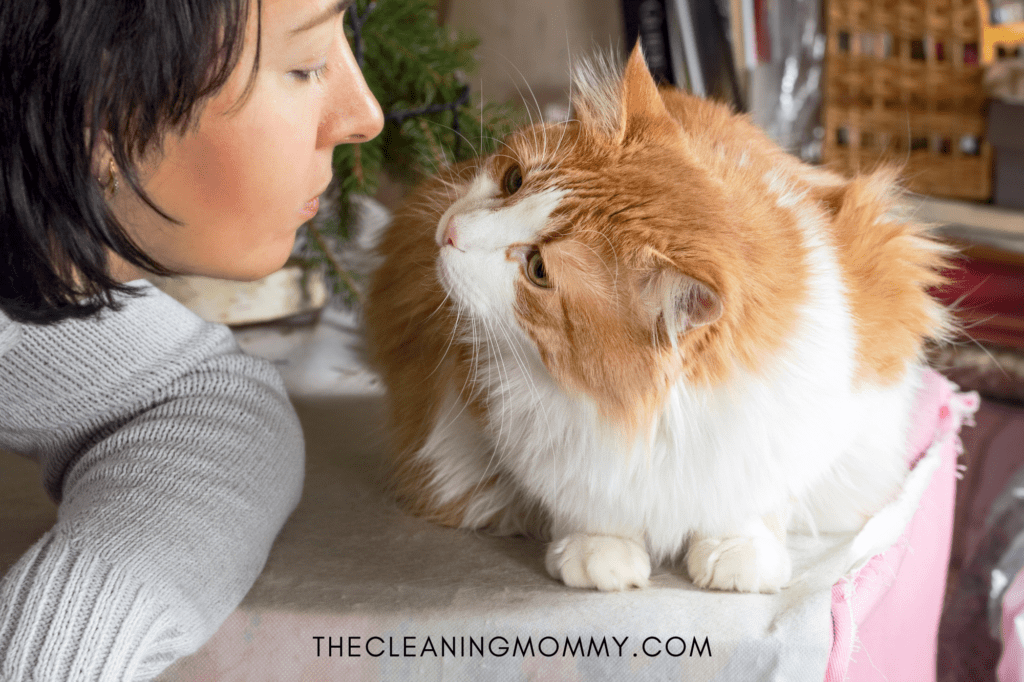
Using Special Pet Odor Remover
This procedure is excellent for hardwood floors that have been sealed. Simply ensure that the product you purchase is suitable for use on hardwood floors.
- Using paper towels, soak up any extra pee.
- Using a moist cloth or sponge, clean the area.
- Using a towel, thoroughly dry the area.
- Spray the affected area with the odor-removing product.
- Allow it to sit for the specified amount of time on the package.
- Using a clean moist cloth or sponge
- Fresh water should be used to rinse the area.
- Using a clean towel, thoroughly dry the area.
To kill germs, wash the cleaning products you used — sponges, rags, and towels — in a hot wash.
Vinegar Baking Soda Mix
Don't have a pet odor eliminator and don't want to sand your flooring back? This is a wonderful way to eliminate old pet stains and odors from any type of wood floor.
Baking soda and vinegar are two everyday household products you can use to clean up a cat smell and stains. Baking soda works by neutralizing the acid in the urine, which helps to reduce the smell.
Vinegar also helps to break down the urine proteins, making it easier to remove the smell and the stain. Together, these two ingredients can effectively clean up and remove smells left by cats.
- In a cup, combine 13 cups of distilled white vinegar, 14 cups of baking soda, and a drop of dish soap.
- Fill a spray bottle with it and soak the affected area.
- Allow for 15 minutes of resting time.
- Using a clean cloth, wipe it down.
- Overnight, sprinkle baking soda over the affected region.
- Vacuum first thing in the morning.
- If the odor persists, repeat the procedure.
To ensure that your flooring is not damaged, test in an inconspicuous location first.
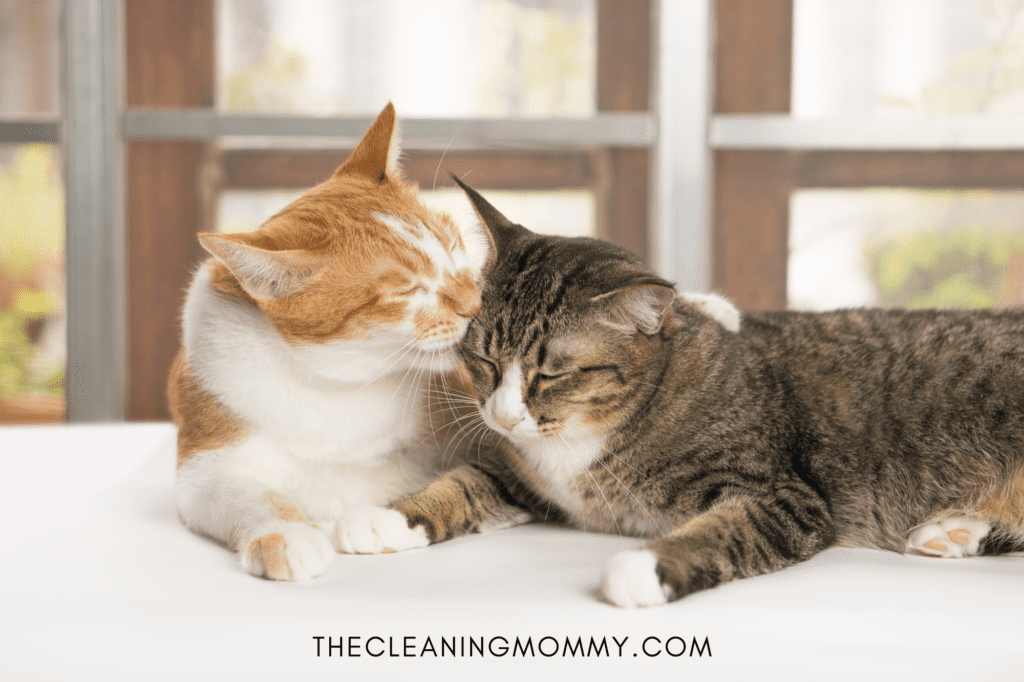
Will Hydrogen Peroxide Damage Hardwood Floors?
Hydrogen peroxide is not harmful to hardwood flooring. I haven't recommended it because it's more for stains than scents. Even if you've removed the odor but still have a stain, this is a smart option to consider.
Surfaces are left clean and debris-free after the cleaning solution breaks down dirt and grime. Further, hydrogen peroxide kills any harmful bacteria that may be present on the floor through its disinfectant properties.
- Fill a spray bottle with 3 percent hydrogen peroxide and apply it on the stain.
- Allow for some time to pass before wiping with a microfiber towel.
- For tough stains, you'll need to put in some elbow grease.
- Rinse the area well.
- Thoroughly dry the area.
To ensure the hydrogen peroxide won't stain your floors, test it in an inconspicuous area first.
Cleaning A House That Previously Had Pets
If you have allergies to pets and are moving into a place that did house indoor pets, then you might want to take these things very seriously and follow the steps to ensure a clean house before before you move in.
Dander loves to hide in carpets, so I would personally consider living in a home that had more laminate or hardwood flooring instead of carpets. Laminate flooring is much easier to clean.
I recommend vacuuming your laminate flooring daily because it's so easy to see cat hair, as well as cat litter droppings all over your floor. Even a robot vacuum is good as long as it has a good filter.
Once a week, I'll use a vacuum mop, unless things get really dirty, in which case I use a spin mop to get rid of surface grime quickly.
Regardless of the type of animal that might have lived in your home before you moved in, there is still a chance this microscopic dander ends up all over the house, even if you cannot see it. This is why a proper and thorough cleaning needs to be done prior to moving in, so you will actually move into a clean house!.
Do you think you have all the information you need to feel comfortable moving into a house that had pets before?
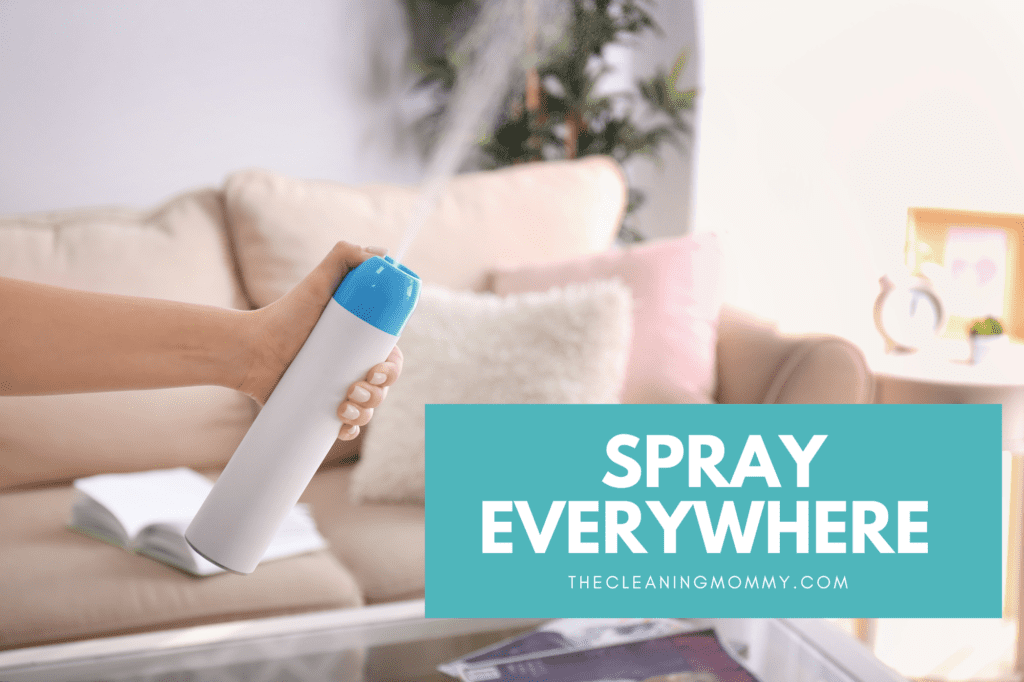
How Do You Keep Your (Cat) House Smelling Fresh?
Maybe you have cats yourself and you are just looking for information on how to keep a house clean with cats? Keep reading for some of my favorite tips for keeping a clean home with cats!
Litter Box Maintenance
Litter box maintenance is vital for the health of your cat. A cat's litter box should be scooped at least once a day and more often if possible. You should change the litter completely every week or two and wash the litter box with soap and water every month.
It's also important to keep the litter box in a quiet, low-traffic area of your home. If you have multiple cats, it's best to provide litter boxes for each cat.
Enzymatic Cleaners On Pet Stains
When it comes to cleaning up after our furry friends, enzymatic cleaners are often the best choice. These products utilize enzymes to break down the proteins that cause pet stains, leaving your carpets and furniture looking as good as new.
Enzymatic cleaners are safe to use around pets and children, and they are often more effective than traditional cleaners. However, it is important to read labels carefully before using any cleaner on carpet or upholstery, as some enzymes can damage delicate fabrics.
With some care, enzymatic cleaners can help keep your home looking its best.
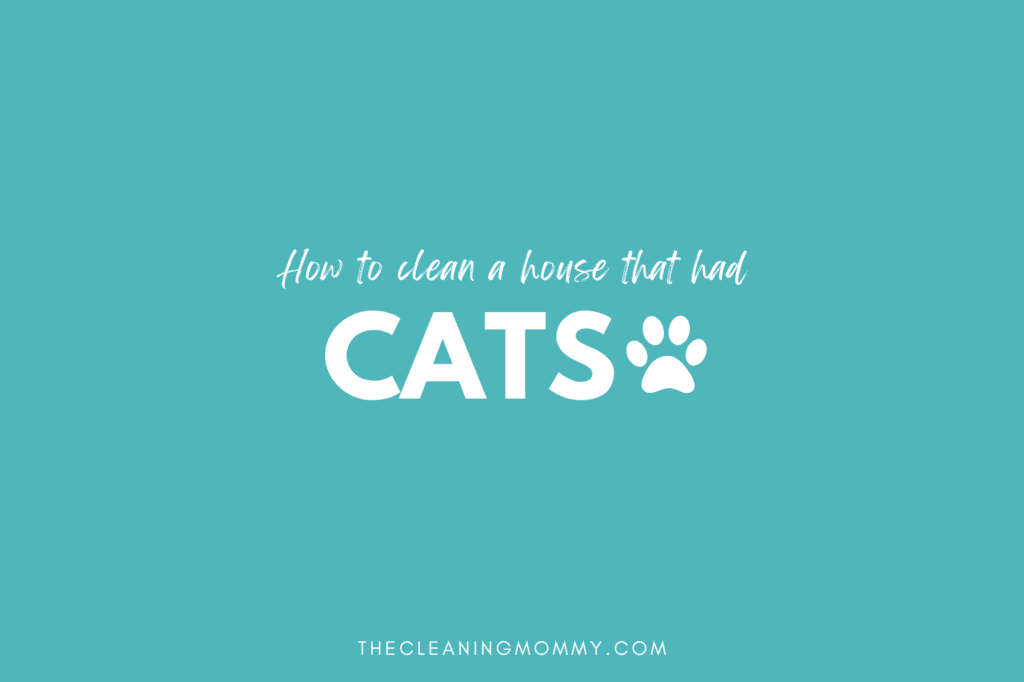
Clean Your Pet Bedding Often
Your pet's bedding should be kept clean to keep your home fresh. Not only will this prevent odors and smells, but it will also help to keep your pet free from parasites and other pests. Pet owners should clean bedding regularly to remove all the cat hair, and soiled areas should be spot-cleaned as soon as possible.
Use a mild detergent and warm water when washing your pet's bedding. Be sure to rinse the bedding thoroughly to remove all traces of soap. Once the bedding is dry, you can give it back to your dog or cat.
Frequently Asked Questions
How Long Does Pet Dander Stay in a House?
Animal allergy levels are greatest in houses with pets. Surprisingly, these allergens are also discovered (in smaller levels) in locations where pets have never been present, such as schools and offices, having been transported there on the clothing of pet owners.
Dander allergens are sticky, and dander in soft materials such as carpets, mattresses, upholstered furniture, and clothes can linger for extended periods of time. Pet dander can stay in a home for up to six months after the pet has been removed unless extra precautions are taken.
Brush your cat regularly and vacuum right after to help reduce dander in the house going forward.
How Do You Remove Cat Dander From the Previous Owner?
Dander can persist for months; therefore, regular cleaning is essential for permanently eliminating it. HEPA air cleaners are another technique to eliminate environmental allergens and reduce exposure while cleaning the house.
Can Cat Hair Go Into Your Lungs?
When pet hair and dander are breathed, the small hairs and other hazardous particles can go down into the lung and become lodged there. This can eventually inflame the lung lining and damage the airways, leading to persistent lung disease. This is frequently referred to as 'Groomers Lung.'
You can get rid of pet odor in your new home with these brilliant cleaning a house with cats tips.
More On Cleaning Routines
- A Brilliant Busy Mom Cleaning Routine
- How To Clean A Disgusting House
- Amish Cleaning Tips You'll Want To Adopt
- How To Clean Your House After Lice
Source: https://thecleaningmommy.com/cleaning-house-cats/